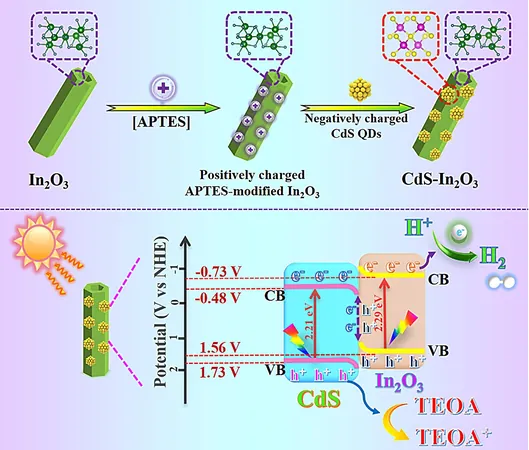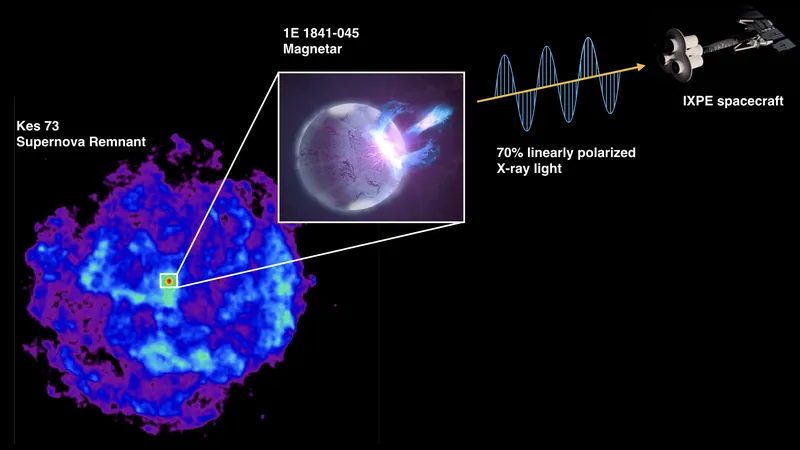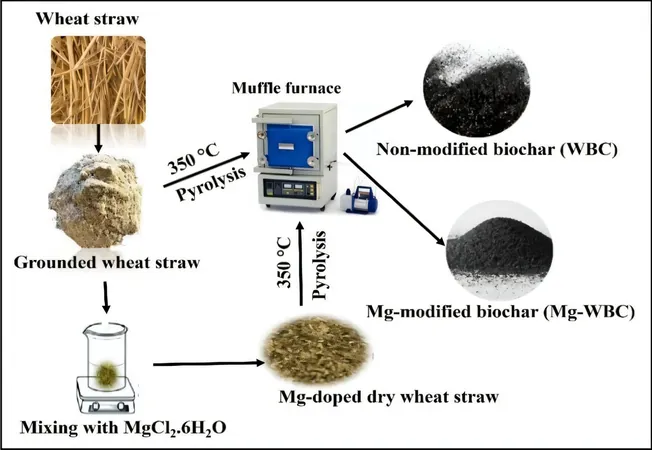
Revolutionary S-Scheme Heterojunction Boosts Hydrogen Production: A Breakthrough in Photocatalysis!
2025-04-30
Author: Daniel
Unlocking the Future of Clean Energy
As the world grapples with energy shortages and environmental challenges, photocatalytic hydrogen production emerges as a groundbreaking solution. At the forefront of this innovation is cadmium sulfide (CdS), a semiconductor known for its optimal bandgap and customizable surface, making it a star player in hydrogen generation.
The Promise and Pitfalls of CdS
CdS is celebrated for its quantum size effect, which enhances photocatalytic efficiency and broadens its light absorption capabilities under visible light. Yet, it faces significant hurdles: rapid carrier recombination and vulnerability to photocorrosion hinder its practical applications.
Innovative Strategies to Propel Efficiency
To tackle these issues, researchers have explored various strategies, including morphology regulation, targeted doping, and innovative heterostructure fabrication. Among these, the S-scheme heterojunction technology stands out as particularly promising.
The Magic of S-Scheme Heterojunctions
S-scheme heterojunctions create distinct zones for oxidation and reduction reactions, which optimizes the spatial separation of photogenerated charges. This clever design significantly amplifies the photocatalytic potential of CdS, offering a robust pathway to enhance its efficiency.
A Game-Changing Discovery from Jiangxi University
In an exciting development, a research team led by Associate Professor Kang-Qiang Lu at Jiangxi University of Science and Technology has successfully engineered an S-scheme heterojunction using CdS quantum dots and In2O3 hollow nanotubes. Their findings indicate a remarkable boost in hydrogen production activity!
Why This Breakthrough Matters
By forming the S-scheme heterojunction, the team's design minimizes carrier recombination, promoting better electron separation and transfer. This not only increases hydrogen production efficiency but also enhances the stability of the composite material. Their research was published in the prestigious Chinese Journal of Catalysis.
How It Works
The innovative composite is created by depositing CdS quantum dots onto the In2O3 nanotube surfaces using an electrostatic self-assembly technique. This structure increases the specific surface area, providing more sites for H2 generation.
Proven Results Through Advanced Techniques
Further investigations utilizing in-situ X-ray photoelectron spectroscopy (XPS) and density functional theory (DFT) calculations verified the effectiveness of the S-scheme mechanism in these composites. Comprehensive analyses confirmed that the heterostructure design significantly enhances the separation and movement of photogenerated carriers, thereby elevating photocatalytic performance.
A Bright Future for Hydrogen Production
The breakthrough development of the S-scheme heterojunction not only paves the way for more efficient hydrogen production but also represents a significant stride toward sustainable energy solutions.



 Brasil (PT)
Brasil (PT)
 Canada (EN)
Canada (EN)
 Chile (ES)
Chile (ES)
 Česko (CS)
Česko (CS)
 대한민국 (KO)
대한민국 (KO)
 España (ES)
España (ES)
 France (FR)
France (FR)
 Hong Kong (EN)
Hong Kong (EN)
 Italia (IT)
Italia (IT)
 日本 (JA)
日本 (JA)
 Magyarország (HU)
Magyarország (HU)
 Norge (NO)
Norge (NO)
 Polska (PL)
Polska (PL)
 Schweiz (DE)
Schweiz (DE)
 Singapore (EN)
Singapore (EN)
 Sverige (SV)
Sverige (SV)
 Suomi (FI)
Suomi (FI)
 Türkiye (TR)
Türkiye (TR)
 الإمارات العربية المتحدة (AR)
الإمارات العربية المتحدة (AR)